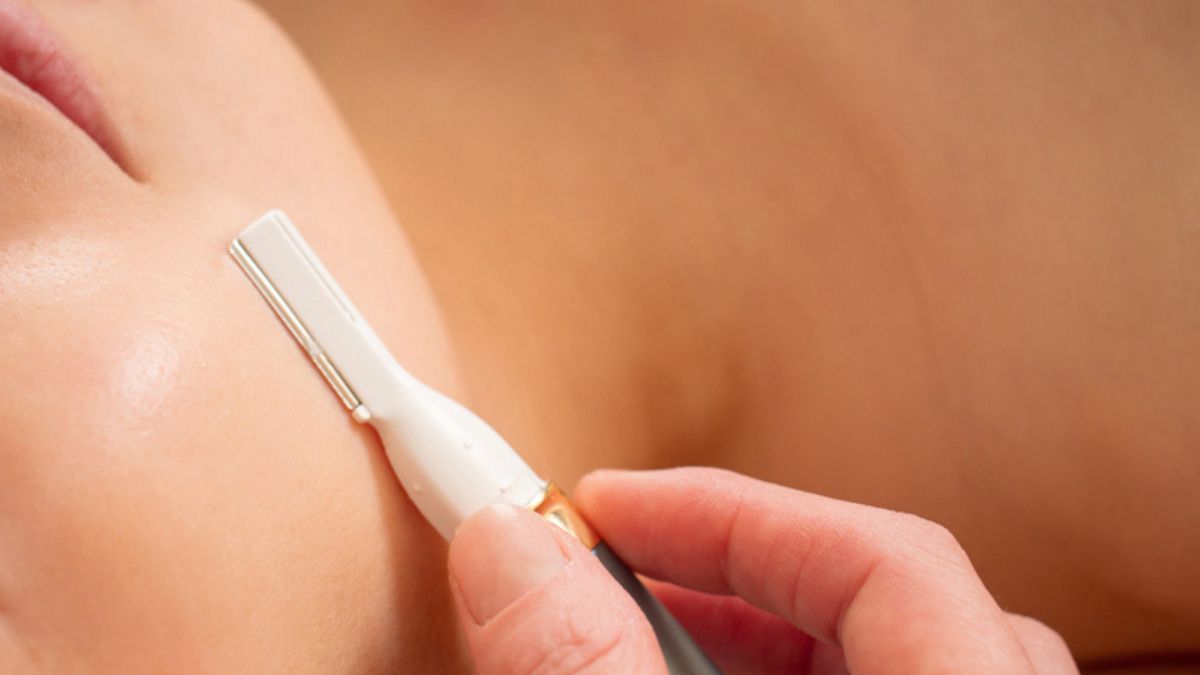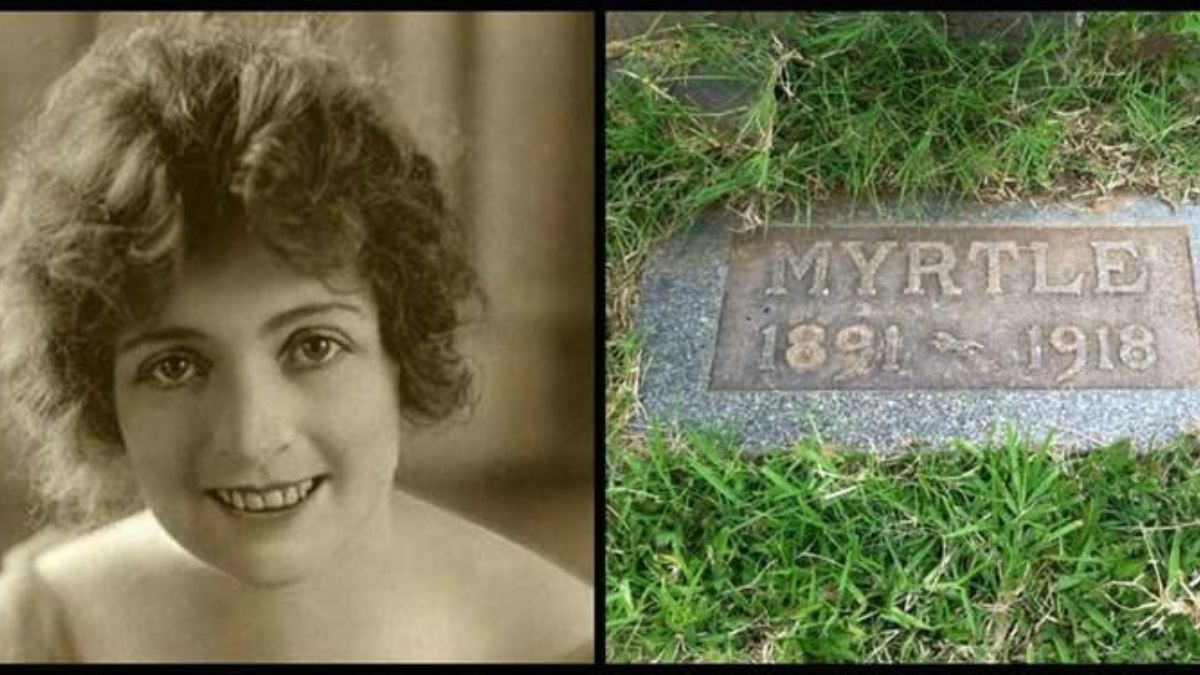HEALTH
Dermablade: The Ultimate Guide to Smooth, Radiant Skin

Different skincare methods have developed over time in the pursuit of perfect, glowing skin. Dermablade is one such technique that has grown in popularity in recent years. Everything you need to know about dermablading is included in this article, from the definition and advantages to the technique and aftercare.
1.What is Dermablade?
Dermablading, commonly referred to as dermaplaning, is an alternative way of renewing and polishing the outermost layer of skin. Dermaplaning is an approach for gently buffing the outer layer of skin and eliminating fine vellus hair, sometimes referred to as “peach fuzz,” through a medical scalpel.
2.How Does Dermablade Work?
Dermablading is a simple procedure. A trained dermatologist will use a scalpel held at a 45-degree angle to gently scrape dead skin cells off your face. This process removes dulling dead skin and fine hair efficiently, revealing fresh, healthy skin below.
3.The Benefits of Dermablading
There are several benefits to dermablading:
- Results in a smoother makeup application.
- Less visible fine lines and wrinkles.
- An instant glow.
- An enhanced ability to absorb skincare products
4.Who Can Benefit from Dermablading?
Dermablading is useful for people with a wide range of skin types. Individuals with chapped or rough skin, an uneven pigmentation, or scant hair on their faces gain the most from using it. Whenever it involves regenerating the appearance of your skin, dermablading may be an innovator.
5.Dermablading vs. Other Hair Removal Methods
Dermablading is unlike any other hair removal or exfoliating technique because of how precisely and efficiently it works. Dermablading, in contrast to waxing, threading, and laser hair removal, is non-invasive and requires minimal recovery time.
6.Preparing for a Dermablading Session
There are a few things you should do to be ready for your dermablading appointment. Some of these measures include limiting your time in the sun and stopping the usage of certain cosmetics.
7.The Dermablading Procedure
After cleansing your skin completely, the dermaplaning scalpel will be softly glidden over the treatment region during the dermablading procedure. It takes around 30 minutes and causes no discomfort.
8.Aftercare and Recovery
Some moderate redness and irritation may follow your dermablading treatment. If you want a speedy and painless recovery from your skincare procedure, it’s crucial that you adhere to your doctor’s post-treatment recommendations.
9.Possible Side Effects
When done by a trained specialist, dermablading is a risk-free cosmetic surgery. Redness, dryness, and occasional breakouts are some of the moderate side effects that may occur. These conditions are usually short-lived and treatable with aftercare.
10.How Often Should You Get Dermablading?
Dermablading treatments should be scheduled at intervals that are appropriate for your skin. Some patients do better with more regular sessions, such as once a month, while others do better with fewer frequent sessions. The optimal timetable will be recommended by your skin care expert.
11.Dermablade Cost
The price of dermablading varies not just by location but also by the level of experience of the technician doing the procedure. In most cases, it is a low-cost choice for improving skin tone and radiance.
12.DIY Dermablading vs. Professional Dermablading
There are dermablading kits you are able to utilize at your residence, but experienced dermablading is your greatest bet for trustworthy outcomes and minimal danger. If you intend to do this, you ought to look for an experienced physician or aesthetic.
13.Conclusion
Finally, dermablading is an incredible skincare method that may help you get silkier, more glowing skin. It’s an ideal choice for a lot of individuals because it’s safe and quick.
14.FAQ’s
1.Is dermablading painful?
When executed by a skilled technician, dermablading does not cause any discomfort.
2.How long do the results of dermablading last?
The effects may continue for weeks, although touch-up treatments may be required to keep them going strong.
3.Can dermablading be done on all skin types?
Dermablading may be done on a wide range of skin types successfully.
4.Is dermablading safe for sensitive skin?
When performed by a trained expert, dermablading is safe for even the most sensitive skin types.
5.Can I wear makeup after dermablading?
After dermablading, you can wear makeup, but it’s best to stick to clean, mineral-based cosmetics.
HEALTH
Setriasona: Unveiling the Marvel of Medical Science

Setriasona is a fascinating chemical with significant implications for medical science within the pharmaceutical industry. So what is Setria sona precisely, and why is it becoming more and more popular in the medical community? Let’s examine the specifics.
1. Chemical Composition of Setriasona
Fundamentally, Setriasona differs from other drugs due to its distinct chemical structure. Analyzing this structure’s constituent parts shows important elements in charge of its therapeutic benefits. Comprehending these subtleties is essential to appreciating the effects of setria sona on the human body.
2. Medical Applications
Since Setriasona’s apps are designed to address certain medical issues, it is not a one-size-fits-all solution. Setriasona’s flexibility in medicine is absolutely remarkable, ranging from its promise in emergency treatment to its function in controlling chronic diseases.
3. Benefits and Side Effects
As with many medications, Setriasona has advantages as well as possible drawbacks. People can use it more intelligently if they consider the benefits in addition to safety measures.
4. Comparisons with Other Medications
What sets Setriasona apart from other medications amid a plethora of options? We’ll examine the special qualities that make Setria sona the recommended option in particular medical situations.
5. Dosage Guidelines
Adherent dose regimens are essential to Setriasona’s efficacy. Comprehending the appropriate dosages under various circumstances guarantees the best possible results and reduces the possibility of negative consequences.
6. Research and Development
Setriasona’s story continues beyond its current uses. Our understanding is growing as a result of ongoing research and development activities, which are also opening the door for future scientific advances in medicine.
7. User Testimonials
An important way to understand the concrete effects of setriasona on people’s health and well-being is via real-life accounts. User testimonies give a clear picture of everything from effective chronic disease treatment to enhanced quality of life.
8. Understanding Setriasona Mechanism
We’ll go into the molecular details of Setriasona’s interaction with the body, focusing on how it targets particular receptors and sets off reactions that support its therapeutic effects.
9. Precautions and Contraindications
Even while setria sona has many advantages, not everyone should use it. Safe medicine use requires careful consideration of who should use caution and any possible interactions with other medications.
10. Setriasona in Veterinary Medicine
Setriasona has uses that go beyond improving human health. Examining its veterinary care success stories helps to illuminate the wider implications of this scientific miracle.
11. Global Availability and Regulations
Traveling across borders with Setria sona means navigating various permission statuses and following various regulatory requirements. For individuals wishing to obtain this drug, it is essential to understand that it is available everywhere.
12. Cost and Affordability
Decisions about healthcare are influenced by economic factors. A thorough understanding may be obtained by examining the variables affecting Setriasona’s cost and the existence of less expensive options.
13. Myths and Facts About Setriasona
Like any novel drug, there are a lot of misconceptions around setriasona. Scientific data that distinguishes reality from fiction aids in debunking myths and promoting more accurate comprehension.
14. Conclusion
Setriasona, in summary, proves to be a significant participant in the pharmaceutical industry, providing a range of advantages when its uses, doses, and possible side effects are carefully considered. To fully realize its promise and contribute to better healthcare outcomes, responsible usage is essential.
15. FAQs
1. Is Setriasona safe for long-term use?
addressing worries over long-term use of Setria sona and safety.
2. Can Setriasona be taken with other medications?
Researching possible interactions and things to think about while using Setriasona with other medications.
3. Are there any dietary restrictions while on Setriasona?
Knowing whether to change certain meals or eating habits while receiving Setria sona medication.
4. How quickly can one expect results with Setriasona?
Controlling expectations about when favorable impacts may materialize.
5. What should I do if I miss a dose of Setriasona?
giving instructions on how to deal with missing doses in order to maintain efficacy.
HEALTH
Korps Sukarela Overview

An integral part of any strong community is its volunteer groups, and “korps sukarela” is one of the most notable for the selfless work and significant changes it has brought about. This page will shed light on the extraordinary job of “korps sukarela” by exploring their genesis, kinds, significance, and obstacles.
1. Origin and History
“Korps sukarela” has deep roots in [country/region] and dates back to [insert date]. From its humble beginnings serving [original mission], it has grown into a powerful catalyst for positive change in the community. The organization has maintained its efficacy and relevance through the years by responding to shifting social norms.
2. Types of “Korps Sukarela”
Many Varieties of “Korps Sukarela” Each variety of “Korps sukarela” has its own unique function and set of duties. These clubs serve a variety of purposes in the community, from environmental protection to emergency response. The variety and breadth of their influence can be better understood by familiarizing oneself with the many kinds.
3. Significance in Community Service
“Korps sukarela” is all about giving back to the community. These selfless individuals improve the lives of the people they help via a variety of programs and projects. Their importance in coordinating community events and delivering relief after calamities is immense.
4. Recruitment Process
Anyone may join “korps sukarela” since it is an inclusive and welcoming community. People of different backgrounds are encouraged to get involved, and the group makes sure that all volunteers share its principles throughout the hiring process. They are able to meet the requirements of a varied population because of their inclusiveness.
5. Training and Skill Development
A thorough training program is administered to volunteers after they have been recruited. In addition to helping individuals grow professionally, these programs also give them the tools they need to succeed in their professions. The focus on ongoing education guarantees that “korps sukarela” will always be a potent and evolving force.
6. Challenges Faced by “Korps Sukarela”
There are many obstacles that “korps sukarela” must overcome, despite their admirable efforts. Their resiliency will be put to the test as they face challenges such as few resources and bureaucratic red tape. But their dedication and creative approaches to problems guarantee that they will keep serving their communities well.
7. Impact on Volunteers
Those who volunteer with “korps sukarela” often report feeling changed by the ordeal. Volunteers frequently notice improvements in their own lives and careers in addition to the beneficial effects on the community. Their general health improves as a result of the knowledge and feeling of purpose they get.
8. Collaboration with Other Organizations
“Korps sukarela” acknowledges the strength of teamwork. Their effect is magnified by the formation of alliances with other groups. Community development, disaster assistance, and environmental projects are just a few examples of how powerful it is to work together.
9. Celebrating Achievements
It is worth mentioning that “korps sukarela” has achieved several noteworthy things. Their commitment is seen by the recognition and honors they have garnered. Recognizing these accomplishments serves to both reward the volunteers and encourage others to do their part for a better world.
10. Future Outlook
“Korps Sukarela” is planning far into the future and has lofty ambitions. Their dedication to constant development guarantees that they will always be in the vanguard of community service, whether it’s by broadening their reach or launching new programs.
11. Case Study: Successful “Korps Sukarela”
Examining a single company in further detail reveals its inner workings, obstacles encountered, and results attained. Through their incredible journey, [insert organization name] embodies the principles and efficacy of “korps sukarela.”
12. Supporting “Korps Sukarela”
Anyone moved to help can do so in a number of ways by donating to “korps sukarela.” Contributions of any kind, whether in the form of monetary gifts, volunteer hours, or sponsorships from businesses, are greatly appreciated. Getting involved goes beyond a simple act of generosity; it shows a genuine dedication to the well-being of the community.
13. Inspirational Stories
Telling the tales of those whose lives are impacted is when “korps sukarela” truly shines. All parties involved, from volunteers to people they’ve helped, should take heart from these moving accounts of the transformative power of volunteerism.
14. Conclusion
To sum up, “korps sukarela” is deserving of praise for the important role they play in community development. Let us be moved to support and actively participate in the admirable cause of volunteering as we contemplate their past, present, and future achievements and struggles.
15. FAQs
1. How can I join “korps sukarela” and contribute to their initiatives?
For details on how to join and make a contribution, check out the organization’s official website.
2. Are there age restrictions for becoming a volunteer with “korps sukarela”?
Age restrictions might differ from one group to another, so it’s best to contact them directly.
3. What types of training programs are offered to volunteers?
Disaster response and community engagement are only two of the many topics covered in training programs.
4. Can businesses collaborate with “korps sukarela” for corporate social responsibility (CSR) initiatives?
When it comes to community improvement projects, many groups are happy to have corporations as partners.
5. How can I nominate a “korps sukarela” volunteer or organization for recognition?
To find out how to nominate someone, you may either call or write the group.
HEALTH
Yenişaak: Unraveling the Mystique of a Cultural Phenomenon

Some words get to the top of the ever-changing lexicon of contemporary culture and language, creating buzzwords that enthrall audiences and start debates. An example of a word that is relatively new to the dictionary is “yenişaak.” The term “yenişaak” will be defined, discussed in cultural context, and examined in relation to its influence on modern culture.
1. Origin and Meaning
In [historical context], the word “yenişaak” first appeared. The term combines [etymological components] from a linguistic perspective. The cultural development that has influenced its modern use can be better understood by looking at its origins.
2. Cultural Significance
“Yenişaak” has several functions in modern society. The phrase has been ingrained in society by its significance in [cultural events] and its impact on [certain cultural behaviors].
3. Popularity and Trends
“Yenişaak” has gone viral on social media and isn’t exclusive to language circles either. The usage of certain hashtags and the production of [memes that generate trends] have propelled “yenişaak” to the forefront of online attention.
4. Understanding the Context
One must be familiar with the term’s many uses, though, in order to fully grasp it. “Yenişaak” changes to fit its environment, whether it’s [in general discourse] or [in specific settings].
5. Influence on Language
There have been changes to communication techniques and linguistic evolution as a result of the incorporation of “yenişaak” into ordinary discourse. In [different linguistic subtleties], the effect is noticeable.
6. Expressions and Interpretations
Since “yenişaak” is expressed differently by different people, it may be understood in several ways. The complex tapestry of expressions throughout [various cultures] is enriched by regional variances, which give depth to its meaning.
7. Controversies and Debates
Notoriety brings with it debate. From [social difficulties] to [ethical considerations], the word has kicked off debates on [controversial elements].
8. Meme Culture and Humor
Both “meme” and “yenişaak” are frequently used together. There are a lot of funny examples thanks to the term’s incorporation into meme culture, which has opened up a new realm for [digital humor].
9. Impact on Online Conversations
Nowadays, “yenişaak” may be expressed in more ways than just writing. [Memes, GIFs, and other visual expressions] abound on social media, a clear indication of its influence on online discourse.
10. Influence on Social Trends
The phrase has left its imprint on [social trends, lifestyle, and fashion] regardless of language barriers. The increasing cultural impact of “yenişaak” is a result of the collaborations and partnerships that it has inspired.
11. Community Building
Building Strong Communities Many different groups of people have come together around a common love of “yenişaak.” Members of these communities feel more connected to one another because they share [certain beliefs and practices].
12. Celebrity Endorsements
Yes, even famous people have fallen for the charms of “yenişaak.” Examples of [celebrity endorsements] have increased the term’s visibility, which in turn has affected fan participation and discussions about popular culture.
13. Future Prospects
Looking ahead, we can’t say where “yenişaak” will go. The term’s ongoing popularity is dependent on how it adjusts to changing cultural environments, as predictions indicate [possible changes].
14. Conclusion
As a cultural phenomena that has interwoven itself into the fabric of modern life, “yenişaak” is more than simply a phrase. This piece beautifully illustrates how language and culture are ever-changing, from its [historical roots] to its [present cultural importance].
15. FAQs
1. What does “yenişaak” mean?
A word with roots in [historical context], “yeni şaak” has expanded to include [contemporary cultural importance]. Its context determines the possible interpretations.
2. How has “yenişaak” influenced social media?
The usage of targeted hashtags and the production of [memes that generate trends] have contributed to the term’s meteoric rise in popularity on social media.
3. Are there regional variations in the usage of “yenişaak”?
Indeed, there are geographical differences in the meaning and manifestations of “yeni şaak” that contribute to its richness among various groups.
4. Is there any controversy surrounding the term?
“Yeni şaak” has spurred discussions on [controversial elements], including [social concerns] and [ethical considerations], as do many popular phrases.
5. What does the future hold for “yenişaak”?
Predictions indicate [possible advances], but the future of “yeni şaak” is unclear. How well it adjusts to changing cultural contexts will determine how long it remains popular.
-

 NEWS6 months ago
NEWS6 months agoDystopian 1993 Novel NYT: Navigating a Dark Literary Landscape
-

 TECHNOLOGY5 months ago
TECHNOLOGY5 months agoFacebook Login Page: A Gateway to Social Connectivity
-

 BUSINESS6 months ago
BUSINESS6 months agoConnect Shopify Forms to HighLevel: Streamlining Your Business Processes
-

 HOME5 months ago
HOME5 months agoCraigslist Tampa: Navigating the Online Marketplace
-

 CELEBRITY8 months ago
CELEBRITY8 months agoMyrtle Gonzalez: A Trailblazer in Early Cinema
-

 HOME5 months ago
HOME5 months agoThe Clear Advantage: Unpacking the Benefits of Clear Backpack
-

 EDUCATION9 months ago
EDUCATION9 months agoHumble Beginners: Navigating the Path to Success
-

 HOME5 months ago
HOME5 months agoSnow Storm: Navigating the Whirlwind
